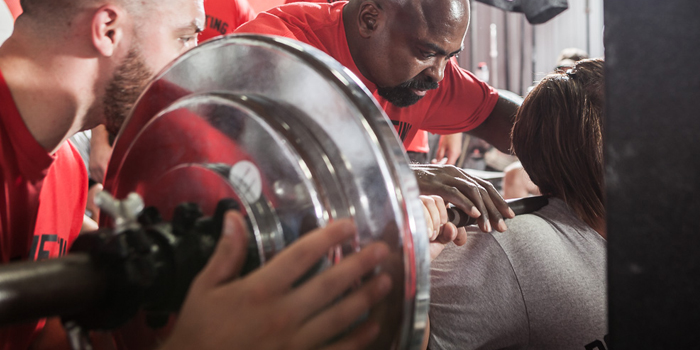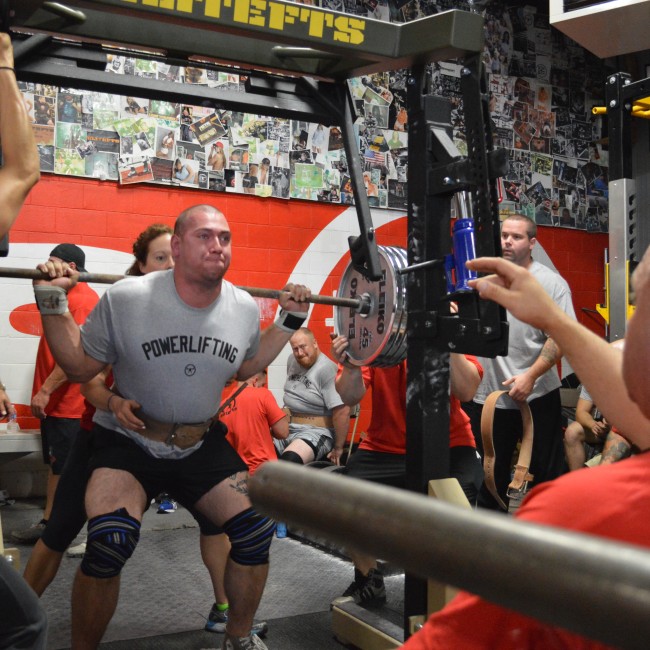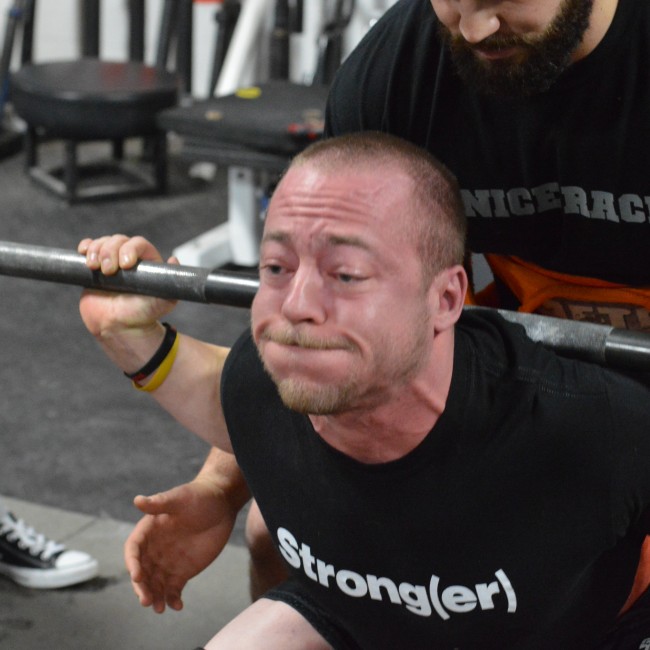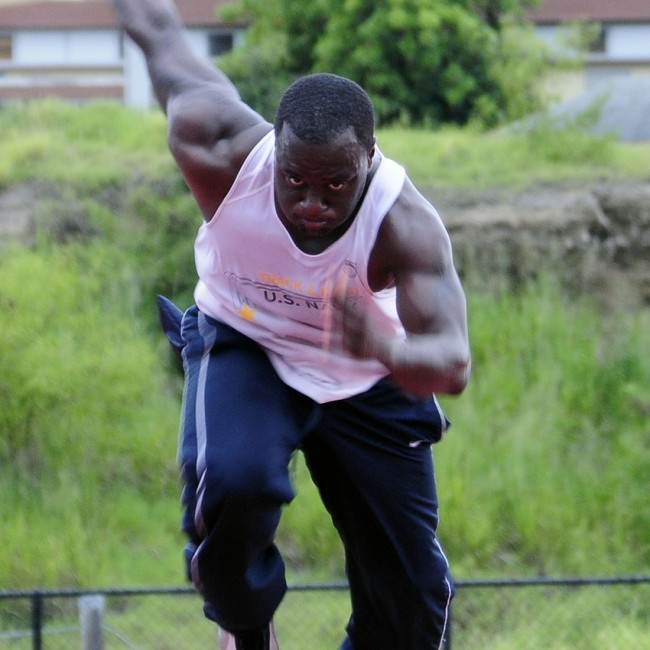
Squat depth has become a highly controversial topic. What is considered a “real squat”? Why is there a perception that only real men/ women squat a certain way? In reality a “real squat” is the squat that fits one’s biomechanical and orthopedic abilities to aid in sport enhancement and advancement. Speaking in absolutes with regards to only one variation of squatting (or any other movement) is useless because everyone is different. Determining how one should squat is to be assessed and analyzed on an individual basis. This is a concept that took me way too long to face, and even longer to accept. With that little rant out of the way, let's get down to business. No movements are inherently good or bad. Instead, it is one’s ability to perform said movement that dictates the usefulness of the movement. When it comes to physical preparation for sport, there are a few points brought up by Buddy Morris that need to be considered before having an athlete squat to depths unknown.
- Produce and supply the most comprehensive program you can to the athlete.
- Modify movements based on individual needs, biomechanics and injury history.
- Help the athlete achieve the highest level of physical preparedness at the lowest cost to the athlete. Exercises that yield the highest possible results at the lowers cost to the athlete. The cost to the athlete is determined by orthopedic considerations and trainability (Morris, 2014).
From here we can look at what dictates an athlete’s squat depth. Injury contra indications play a large role here. Prior disk (or, in the words of Mike Tyson, spinal) injuries or hip impingement could keep you from squatting to a certain depth. I am aware that both Louie and Brian Carroll have come back from serious back injuries to yet again squat very heavy, but for athletes whose sports is not powerlifting, the risk : reward cost to the athlete far outweighs the positives. The depth to which a neutral spine may be maintained should also be evaluated. Weak anterior torso muscles often lead to an inability to maintain neutral spine as squat depth increases. This means that you should pay close attention to lumbar flexion. Repeated lumbar flexion and compression are the quickest ways to herniated lumbar disks (Beyond the Trees, 2013). The posterior portion of lumbar intervertebral disks are the weakest portion and most prone to injury when exposed to lumber flexion. The deep muscles of the anterior core serve as the greatest spinal stabilizers (Dr. Henoch, 2014).
When the transverse abdominus, rectus abdominus, and internal and external obliques do not do their job, other muscles or structures end up carrying the extra load (McGill, 2003). This increase the cost on the athlete. To combat this and maintain a neutral spine, an athlete should set the diaphragm and pelvic floor parallel to one another. Check out Chris Duffin's YouTube page for specific ways to accomplish this positioning, with the spine in it's strongest neutral position.
A lack of mobility also has an impact on the squat. The most common places to lack mobility are the hips and the ankles. Sufficient motion of these joints is needed to protect the lumbar spine (Cressey, 2009; Beyond the Tees, 2013). As mobility progresses with stability of the appropriate joint complexes, squat depth can increase.
It should be noted that proper technique is important through every phase. Any number or combination of the above mentioned points can lead to the overall biomechanical inefficiency of a movement pattern. As technique and biomechanical efficiency improve, so should squat depth given the athlete does not have limitations from injury history or orthopedic issues. The training quality looking to be developed will be the determinant of the technique. If acceleration is the targeted quality, a greater degree of knee bend will be need than if maximum velocity was the desired quality (Smith, 2014)
If an athlete fits into any of these categories, squat depth should be limited to allow the athlete to demonstrate optimal squat technique. All the qualities of the proper squat should be present no matter what depth one squats to. The only changing variable is the amount of knee flexion and possible stance width depending on hip socket depth. So what are the key points of maintaining good squat mechanics irrelevant of depth?
- Diaphragm and pelvic floor are parallel to one another. This allows for optimal bracing, AKA intra-abdominal pressure (Dr. Henoch, 2014)
- Spine maintains a neutral position at all times. (Beyond the Trees, 2013)
- Feet are gripping and spreading the floor. This increases gluteal activation and aids in preventing valgus knees.
- Knees track over the second toe.
Now with deep squats out of the picture, what movements are viable for this group of athletes? As you can see, there is a common theme of this article: to prevent lumbar flexion and maintain a neutral spine throughout the entire movement.
Such movements that can help encourage this are:
1. “High” Box Squats
High is a relative term in that the box height is above where the athlete experiences technical faults in the movement (i.e. Lumbar flexion). Reinforce proper squat mechanics. As the athlete progresses, the box can be lowered.
2. Anteriorly-Loaded Squats or Lunges
This will help engage the anterior torso musculature/ deep spinal stabilizers.
3. Rear-Foot-Elevated Split Squats (or Another Split Squat Variation)
Having one gluteus maxiums, medius and minimus in contraction creates greater force closure of the Sacroiliac joint leading to a more stable lumboplevic complex and a potential for greater depth to be achieved in a squat (Institute Education, 2012)
4. Step-ups
Set the height of the step low enough that the athlete is not forced into lumbar flexion.
With alternatives to deep squatting in place, one might be asking what about posterior chain recruitment/development (specifically the gluteus maximus, as it is the primary hip extensor when the knee is in flexion)? The answer here is that if your programming is sound, there is not an issue. Hip extension and gluteus maximus are recruited in the actions of sprinting, jumping, medicine ball and/or hip-hinge dominant movement.
Some may have seen this coming, but lumbar flexion is to be avoided when performing the hip hinge. Pulling from the floor may not be suitable for all athletes. Rack pulls, RDL’s starting from an elevated position, stallions (follow Chris Duffin), manual resisted reverse hypers, and light hip thrusts are all potential options for athletes with limitations or are in need or regressions.
To wrap things up, the point of this article is not to say bilateral movements are bad or that squats to parallel or below are the devil. In fact, these movements are important because they allow athletes to handle heavier weights which means a greater force is applied to overcome, which in turn leads to the recruitment of high threshold motor units that are imperative to any sport with explosive or strength qualities. The message of this article is to use movements and ranges of motion your athletes currently have. As a physical preparatory coach, one needs to be able to adapt to what they see and not force athletes into a position they are not biomechanically or orthopedically able to handle.
If a motion is not there, do not force it. When designing programs, the structural integrity and biomechanical efficiency should be at the forefront of exercise selection and programming.
References
- Beyond the Trees - Recognizing the Flexion Intolerant Back. (2013, November 2). Retrieved from rehab2performance.com: http://www.rehab2performance.com/flexion-intolerant-back/
- Cressey, E. (2009, May 5). T-Nation. Retrieved from t-nation.com: http://www.t-nation.com/free_online_article/sports_body_training_performance_repair/more_lower_back_savers
- Dr. Henoch, Q. (2014, September 4). THE BEST DAMN SQUAT MOBILITY ARTICLE. PERIOD. Retrieved from jtsstrength.com: http://www.jtsstrength.com/articles/2014/09/04/best-damn-squat-mobility-article-period/
- Institute Education. (2012, August 14). Myofascial Slings Introduction. Retrieved from youtube.com: https://www.youtube.com/watch?v=wI6cUj6jig0
- McGill, S. (2003, July 17). Mister Spine. (M. Demers, Interviewer)
- Morris, B. (2014, March 24). Buddy Morris: Back in the League. (M. Watts, Interviewer)
- Smith, J. (2014). Applied Sprint Training.
James graduated from Iowa State University last year with a BS in Kinesiology and during that time I was fortunate enough to intern with Iowa State Olympic Sports, Iowa State Football, Minnesota Hockey Camps, the University of Denver’s Strength and Conditioning programs as well as one with Team Chiropractic and Rehabilitation. Currently I am pursing a Doctor of Chiropractic at the University of Western States and look to make time to get back on the platform and improve upon my 1390 total (s-530, b-305, d-555) at 181.













I had been working on an article similar to this, so you're also a prick for beating me to the punch.
That aside, great article. I have long maintained that squat depth is overrated unless it's a requirement of your sport. More important is to just squat and build strength as best you can, in ways that help the athlete the most.
Sorry about the first two points but thank you. You nailed it, build strength and translate it into faster force development.
Also, I enjoyed your article. The foot and foot function in general are overlooked in generating force through the kinetic chain.